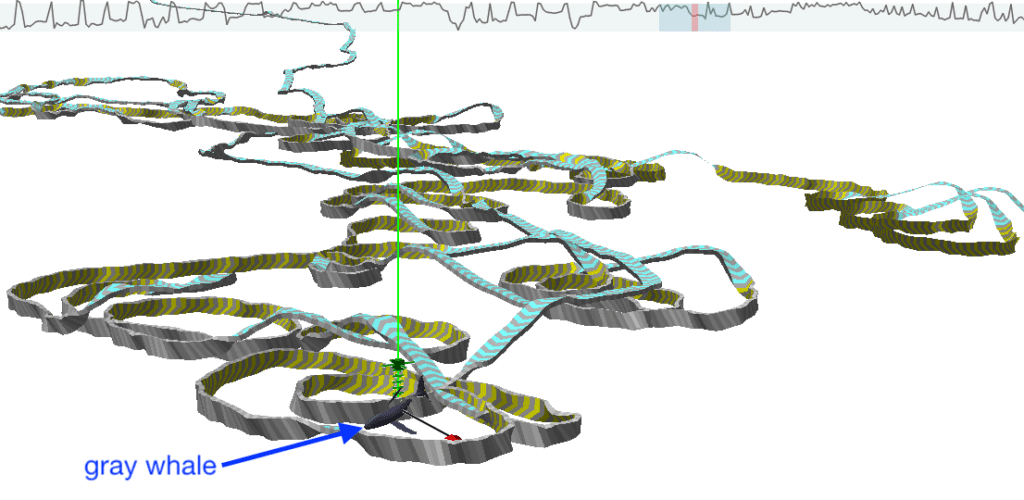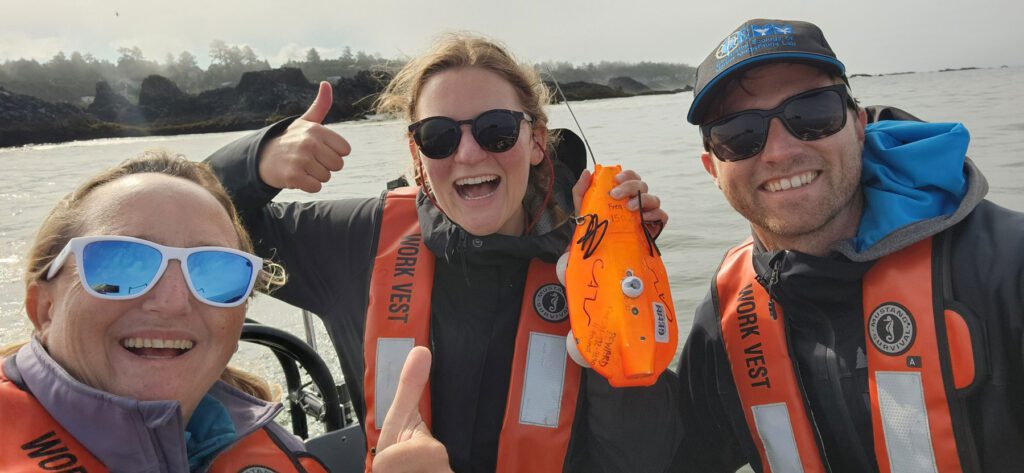How do we study whale behavior with suction-cup tags?
Whales only spend a fraction of their lives at the surface when they come up to breathe. What if we could also monitor what they do beneath the water’s surface?
Luckily, thanks to non-penetrating suction-cup tags equipped with video cameras and hydrophones (or underwater microphones), we are able to get a glimpse into the underwater lives and energetics of Oregon gray whales! The tags contain multiple sensors, including an accelerometer (to measure speed), a magnetometer (to measure heading), and a gyroscope (to measure pitch and roll), which allow us to recreate a whale’s movement path and body position. By pairing these data with the video recordings, we can see what behaviors whales are doing within different contexts (e.g., in the presence of boats or other whales). The video recordings from the tags show whales digging their heads into the sea floor near reefs, generating billowing clouds of sediment as they try to get a mouthful of prey. We also saw foraging whales undertake dizzying spins and headstands for hours, demonstrating the fascinating maneuverability and flexibility of gray whales.

In the past, we attached these suction-cup tags to the skin of individual whales by using a 16 foot (5 meter) long pole from our research boat. However, this approach required us to get very close to the whales to tag them, which can cause the whales some distress to have a boat so close (even if just for a short period of time). So, we changed our methods, and we now use a much less invasive approach: we deploy the tags from our drone! Many thanks to the innovative and collaborative folks at Ocean Alliance for first developing the drone deployment method and the OSU Innovation Lab who helped us design, test, and succeed with our tag dropping system.

Colson KM, Pirotta E, New L, Cade DE, Calambokidis J, Bierlich KC, Bird CN, Fernandez Ajó A, Hildebrand L, Trites AW, Torres LG (2024) Using accelerometry tags to quantify gray whale foraging behavior. Marine Mammal Science e13210, https://doi.org/10.1111/mms.13210
Blogs:
A Master’s odyssey: Decoding gray whale foraging energetics with high-resolution tag data https://blogs.oregonstate.edu/gemmlab/2023/09/25/a-masters-odyssey-decoding-gray-whale-foraging-energetics-with-high-resolution-tag-data/
Putting Fitbits on whales: How tag data allows for estimating calories burned by foraging PCFG gray whales
https://blogs.oregonstate.edu/gemmlab/2022/09/12/putting-fitbits-on-whales-how-tag-data-allows-for-estimating-calories-burned-by-foraging-pcfg-gray-whales/
How much energy does that mouthful cost?
https://blogs.oregonstate.edu/gemmlab/2021/10/25/how-much-energy-does-that-mouthful-cost/
